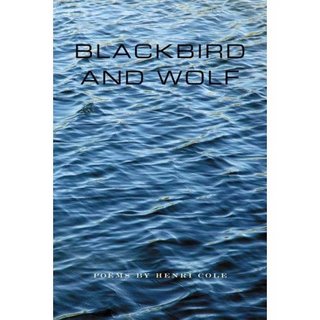Andrew Feld is the author of Citizen, a 2003 National Poetry Series selection. His poetry has appeared in The Canary and other journals and has been awarded two Pushcart Prizes and included in the Best American Poetry series. He is Assistant Professor of English at the University of Washington and Editor-in-Chief of The Seattle Review.
http://poetryfoundation.org/dispatches/journals/index.html
Where he has this to say:
<The Seattle Review, I hoped, would be a place where young formalists bumped against old experimentalists, and the well-wrought narrative would be placed next to the jagged, new-fangled difficult poem. Since as a reader I don’t have to choose between Oppen and Merrill, there seemed to be no reason why as an editor I shouldn’t be able to publish (ideally) Lyn Hejinian next to Gjertrude Schnackenberg next to Phil Levine. In practice, however, the difficulty is: how much democracy can a journal contain before it dissolves into chaos? If you give up the vibrancy and drive that a journal derives from being the public forum of a lively community, how do you give your journal a sense of vital energy? How can you make the journal cohere?>
I love what Feld says here. First, the laudable desire for a radical inclusiveness in a literary journal. The literary journals I enjoy the most are the ones that have a certain diversity of work. But on the other hand, the thought that an editor would want to place Hejinian, say, with Levine, strikes me funny. It strikes me as funny, as in ha-ha, as well as funny, as in strange. What a weird reading experience that would be. As Feld says, potentially chaotic, or actually chaotic. But on the other hand, if an editor has the desire to do something like this (this radical inclusiveness), and then actually does it, perhaps rather than chaos, there would be a larger unity, a unity of representing the contemporary poetry scene in its fullness. It might just turn out to be more useful and interesting than any worry about considerations of coherence or chaos. I would be interested in reading such a presentation the way one might read a newspaper. To see what’s happening in the world today.
Inclusiveness is a goal a lot of journals have; I’ve talked about it a lot with many editors. The whole idea of “good poems irrespective of aesthetics” in so many journal guidelines is a nod toward this inclusiveness. But we can only publish what is sent, which keeps a lot of the diversity out of our hands. It’s such a worthy goal, though. Will The Seattle Review be able to exhibit this sort of radical inclusiveness? I hope so. Or should I hope so? What do you like best about the journals you read? Aesthetic focus? Inclusiveness?
Here’s a poem by Andrew Feld, from VQR, reprinted in Legitimate Dangers:
On Fire
Having been taught by fools, how else could I have ended up
but as I am? a man who panics at the sound of his own voice,
a blusterer, afraid that within the five-pointed maple leaf there lies
another name he never knew; ready, always, to be found wrong.
Listen: in my tenth year they put me in a room where one plane
watched another plane fly over a city. It was morning in both
places. In black & white at first the explosion looked like water
rising. Captured, they say, on film, as in: pulled out of time
so we can rewind it and watch it happen again, as in a memory,
as in: this is a memory we all have, these are our family pictures.
There was that kind of shame. As if the fire really had been stolen.
And sitting on the floor there was one boy who even earlier
that year came home to find his mother hanging from a rope
in the kitchen. What didn't he know that he needed this film
to teach him? Already what he knew was enough to terrify
the teachers, so that they couldn't look at him. But they also
couldn't not look at him. As if he was an obscene pleasure.
And he was beautiful. Complete. But what he carried in him
seeped out as hate for anyone of the same sex as his mother.
It was that simple: even a fourth-grade mind could understand.
So the girls stayed away. And from the other side of the common
room, where the books full of numbers being added, subtracted
and divided were kept, our new teacher watched, helpless, knowing
he also needed this knowledge, but she couldn't give it to him.
Which might be why she let me touch her. Because she couldn't
get near him and my head against the antique white lace of her
dress was a good enough almost. Her hair was light brown, if I
remember correctly. Innocent is supposed to mean free from hurt
but it can also mean you don't know what you're doing. As when
I felt that touching her wasn't enough and I wanted to press closer,
until someone felt pain, or until I passed through her dress and found
myself inside her. It didn't matter if she was an adult and I was ten:
what I wanted wasn't sex. Or not what I have learned to think sex
is. Her dress was made of a material called vintage, which meant
that although it had managed to avoid all the minor catastrophes
of red wine stain and hook snag, along with the major disasters
of history, no one had treated the cloth with chemicals, to make it
flame retardant And on the whole length of the hand-sewn inner seam
that started at her wrist and ran all the way down to her ankle,
no one had remembered to place even one small label warning:
if you touch the sleeve of this garment to the still-hot coils
of an electric stove, it will explode. Which is what happened.
There's the land of scream you hear in movies. What I heard
twenty-seven years ago didn't sound anything like that. It was
sharper and can't be recorded. No matter how many times
you rewind the film. You keep going back and each time
there's a little less there. Until the memory has become
the event. And how you feel about the memory. The materials
have burnt away. There was so much fabric and all of it on fire.
Her hair too, which was long, as I remember. She came running
from the faculty kitchen, as if she could escape what she was
turning into. But all she did was excite and encourage the flames.
 -suitable for framing-
-suitable for framing-
























